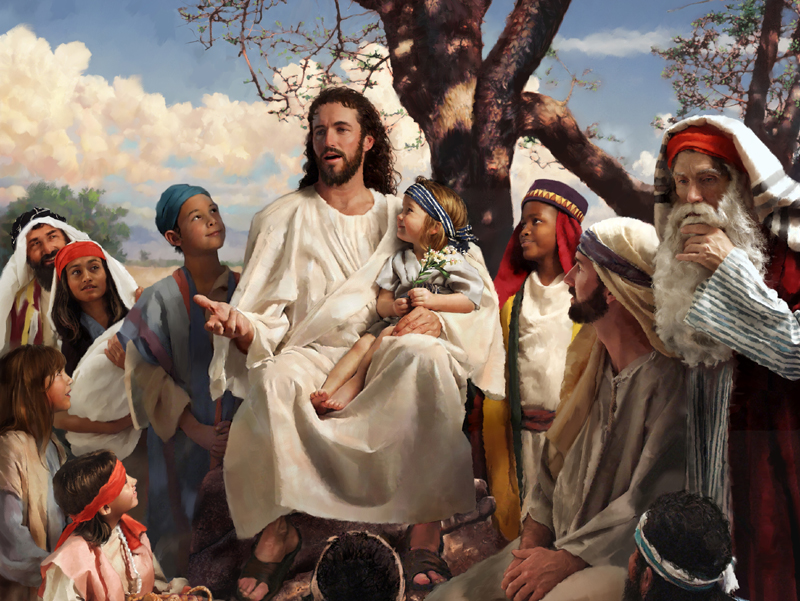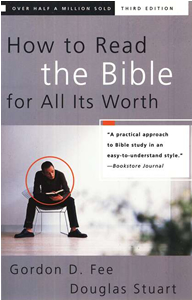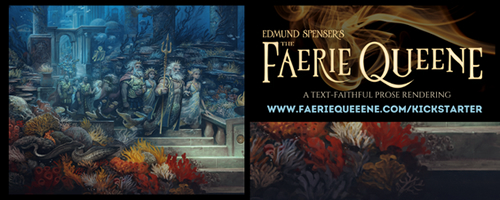Jesus’s Stories Are Not Just Allegories
 Have you ever read or re-heard one of Jesus Christ’s parables and found yourself slipping into the role of casting director? Only instead of casting certain actors as the merciful father or good Samaritan, we cast Moral Virtues — or even people we know — in place of each.
Have you ever read or re-heard one of Jesus Christ’s parables and found yourself slipping into the role of casting director? Only instead of casting certain actors as the merciful father or good Samaritan, we cast Moral Virtues — or even people we know — in place of each.
- The self-righteous Pharisee1 becomes a mere stand-in for that annoying evangelical leader on TV, or that hypocritical pastor or deacon or parent.
- The rich fool2 becomes a mere stand-in for wealthy businesspersons and capitalists who don’t care for the poor or for biblical social justice.
- The servants entrusted with literal “talents” to invest3 becomes a tale of our individual use of metaphorical talents or literal wealth. This leads to support for growing money with investment (a questionable application!) or justifications for using our abilities wisely (a better application, yet one that could miss the Kingdom context).
Not long ago I never even questioned the assumption that Jesus’s parables are simple this-for-that allegories. But Christians who want to enjoy fantastical stories for God’s glory, or even create such stories themselves, ought to re-evaluate this assumption. That way we can honor God’s Story and understand other stories better—including fantastical stories.
If we assume that Jesus only spoke in direct-allegory parables, we can get into trouble:
- We may miss Jesus’s own points when he often introduces his similes or long-narrative parables with the comparison phrase, “The kingdom of heaven is like …”.
- We may twist other texts, even real-life narratives, as similar “allegories” — e.g., the main lesson from David’s faceoff with Goliath4 is not that God worked through David at this point in the Story, but that we must confront “our own giants.”
- We may wrongly conclude simple allegory is more spiritual or more godly.
- We may misread other stories as simple allegories — either positively, such as when we praise C.S. Lewis for his “allegories” (the Professor’s mansion = the tabernacle!), or negatively, such as when we condemn a story for including images or symbols that merely tap into our own fears or mythologies (Plugged In likes the Illuminati!).
- We may ignore the God-glorifying human found in non-allegorical stories in which the characters, events and plot are, for the sake of the story, meant as “real.”
Biblically reboot the parables
 Here’s why Christians must reconsider the limited-to-allegory view of Jesus’s parables, according to the nonfiction book How to Read the Bible for All Its Worth.
Here’s why Christians must reconsider the limited-to-allegory view of Jesus’s parables, according to the nonfiction book How to Read the Bible for All Its Worth.
… For all their charm and simplicity, the parables have suffered a fate of misinterpretation in the church second only to Revelation.
The Parables in History
The reason for the long history of the misinterpretation of the parables can be traced back to something Jesus himself said, as recorded in Mark 4:10-12 (and parallels, Matt 13:10-13; Luke 8:9-10). When asked about the purpose of parables, he seems to have suggested that they contained mysteries for those on the inside, while they hardened those on the outside. Because he then proceeded to “interpret” the parable of the sower in a semi-allegorical way, this was seen to give license to the hardening theory and endless allegorical interpretations. The parables were considered to be simple stories for those on the outside to whom the “real meanings,” the “mysteries,” were hidden; these belonged only to the church and could be uncovered by means of allegory.
… It is extremely doubtful whether most of the parables were intended for an inner circle at all. In at least three instances Luke specifically says that Jesus told parables to people (15:3; 18:9; 19:11) with the clear implication that the parables were to be understood. Moreover, the “expert in the law” to whom Jesus told the parable of the Good Samaritan (Luke 10:25-37) clearly understood it (vv. 36-37), as did the chief priests and Pharisees the parable of the tenants in Matthew 21:45. Their problem was not with understanding but with letting the parables alter their behavior!
If we have trouble at times understanding the parables, it is not because they are allegories for which we need some special interpretive keys. Rather it is related to some things we suggested in the previous chapter on the Gospels. One of the keys to understanding the parables lies in discovering the original audience to whom they were spoken; as we noted, many times they came down to the evangelists [that is, those men who wrote the Gospels] without a context.
If the parables, then, are not allegorical mysteries for the church, what did Jesus mean in Mark 4:10-12 by the mystery of the kingdom and its relationship to parables? Most likely the clue to this saying lies in a play on words in Jesus’ native Aramaic. The word methal, which was translated parabolē in Greek, was used for a whole range of figures of speech in the riddle/puzzle/parable category, not just for the story variety called “parables” in English. Probably verse 11 meant that the meaning of Jesus’ ministry (the secret of the kingdom) could not be perceived by those on the outside; it was like a methal, a riddle, to them. Hence his speaking in mathelin (parables) was part of the methal (riddle) of his whole ministry to them. They saw, but they failed to see; they heard—and even understood—the parables, but they failed to hear in a way that led to obedience.
[… N]ot all the sayings we label as parables are of the same kind. There is a basic difference, for example, between the Good Samaritan (true parable) on the one hand and the Yeast and the Dough (similitude) on the other, and both of these differ from the saying “You are the salt of the earth” (metaphor), or, “Do people pick grapes from thorn bushes, or figs from thistles?” (epigram). Yet all of these can be found from time to time in discussions of the parables.
The Good Samaritan is an example of a true parable. It is a story, pure and simple, with a beginning and an ending; it has something of a “plot.” Other such story parables include the Lost Sheep, the Prodigal Son, the Great Banquet, the Workers in the Vineyard, the Rich Man and Lazarus, and the Ten Virgins.
The Yeast in the Dough, on the other hand, is more of a similitude. What is said of the yeast, or the sower, or the mustard seed was always true of yeast, sowing, or mustard seeds. Such “parables” are more like illustrations taken from everyday life that Jesus used to make a point.
Such sayings as “you are the salt of the earth” differ from both of these. These are sometimes called parabolic sayings, but in reality they are metaphors and similes. At times they seem to function in a way similar to the similitude, but their point—their reason for being spoken—is considerably different.
It should be noted further that in some cases, especially that of the Wicked Tenants (Mark 12:1-11; Matt 21:33-44; Luke 20:9-18), a parable may approach something very close to allegory, where many of the details in a story are intended to represent something else (such as in Augustine’s misinterpretation of the Good Samaritan). But the parables are not allegories—even if at times they have what appear to us to be allegorical features. The reason we can be sure of this has to do with their differing functions.5
Because Jesus Himself shared many types of stories — including but not limited to allegory — we need not feel we must hold other stories, even secular ones, to any higher standard.
We need not insist any fantastical tales be limited to allegory, and if they are not (especially if an author said they were not) suspect those stories are not “useful.” Christ himself did not follow such a “rule.” He can be glorified in many story genres, allegory and otherwise!







































Follows posted links … “What? Lecrae was in Believe Me? Oh, the movie scene…”
Follows other link about Narnia…. Oh, look. Has to make more false jabs at Harry Potter…
Yikes!
“Things change shape. Nothing is really real. There is no need for a Savior. One merely has to have the right incantations and formulas to manipulate reality for one’s own selfish ends.”
….Good heavens! Reading things like this still makes my heart hurt, as my one greatest regret in life was believing this until college, and by then, then ending was spoiled for me, and so I will never know that acute shock and pain in “The Lighting Struck Tower,” and the following amazement and grief as the story turns inside out in “The Prince’s Tale,” and suddenly everything that was so foggy comes into crystal clarity.
I’ll never feel the whole shock of grief from Fred’s departure. Or Sirus’. Or Lupin’s.
For that reason, I will zealously guard any children I have from such spoilers until they are ready to read the books – or to have them read to them.
…sorry, what were we talking about? You distracted me with links… 😀
How to Read the Bible for All Its Worth is an excellent resource. Highly recommended.